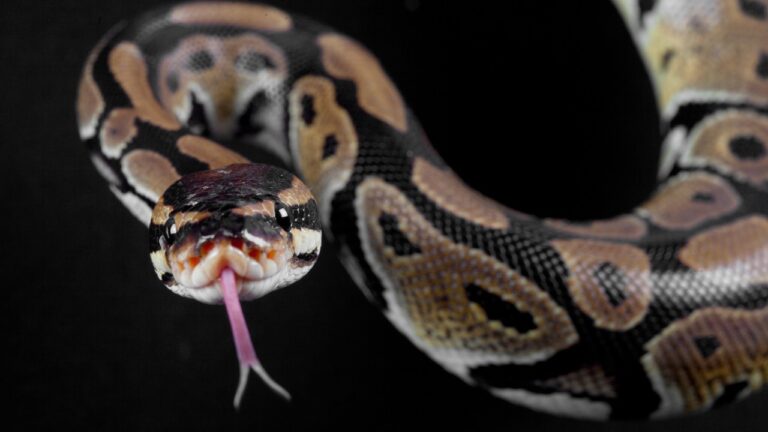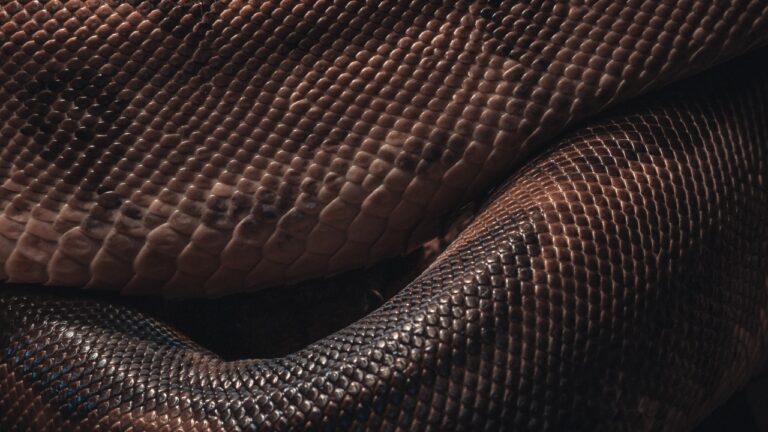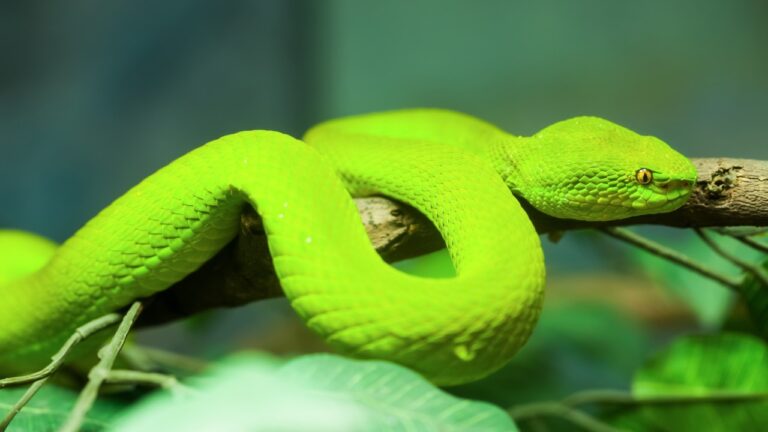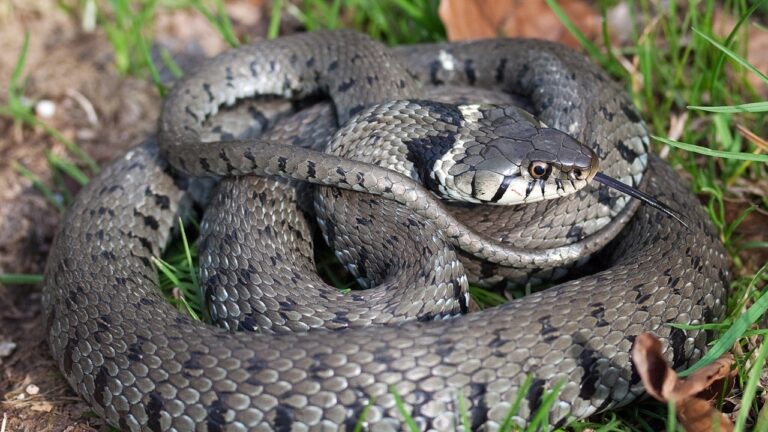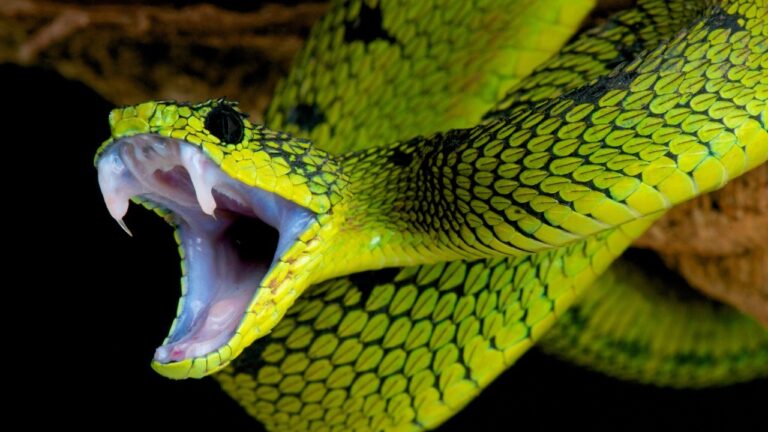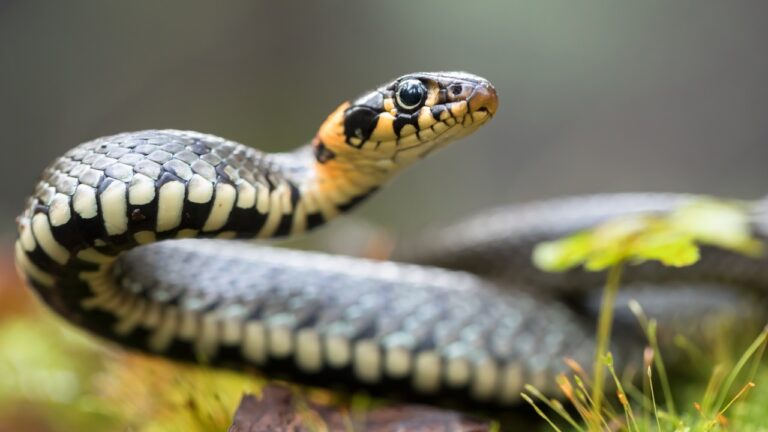Expert Tips: Preparing Frozen Snake Food Easily
Overview of frozen snake food preparation
When it comes to feeding snakes, ensuring they receive a healthy and balanced diet is crucial for their overall well-being. One popular option for snake owners is frozen snake food. This article will provide an in-depth guide on how to prepare frozen snake food easily, covering everything from choosing the right prey size to thawing methods and proper handling.
Feeding snakes frozen food has numerous benefits, making it a preferred choice for many snake owners. Not only does it offer a convenient solution, but it also ensures optimal nutrition and safety for your scaly companion. By understanding the process of preparing frozen snake food, you can provide your snake with a varied and nutritious diet that meets their specific dietary needs.
In the following sections, we will delve into the benefits of using frozen snake food, discuss how to choose the right prey size and source quality frozen food, explore thawing methods and proper handling techniques, and provide essential feeding tips to keep your snake healthy and satisfied. Additionally, we will highlight common mistakes to avoid when it comes to feeding your snake, such as overfeeding or using incorrect thawing methods.
So, whether you are a new snake owner or looking to enhance your knowledge of snake food preparation, this comprehensive guide will equip you with the necessary information to ensure your snake receives the best possible care. Let’s dive into the fascinating world of frozen snake food and discover the secrets to keeping your slithery friend happy and well-fed.
Benefits of Using Frozen Snake Food
When it comes to feeding your slithering companion, opting for frozen snake food has a plethora of advantages. Not only does it provide essential nutrition for your snake’s well-being, but it also offers convenience and ensures the safety of both your pet and yourself.
Nutrition
One of the key benefits of using frozen snake food is the high nutritional value it provides. Frozen prey, such as mice or rats, are rich in proteins and contain essential vitamins and minerals that are crucial for maintaining your snake’s health. These nutrients contribute to strong bone development, muscle growth, and overall vitality.
By offering a varied diet of frozen snake food, you can mimic the natural feeding habits of snakes, which helps ensure they receive a well-rounded nutritional intake. This is particularly important for species that have specific dietary requirements. To learn more about the ideal snake diet, be sure to check out our comprehensive guide on snake diet.
Convenience
Feeding your snake frozen food provides unparalleled convenience for the busy reptile enthusiast. Unlike live snake food, which requires constant care and attention, frozen prey can be conveniently stored in your freezer until it’s time for a meal. This not only saves you time and effort but also eliminates the need to breed or purchase live rodents.
Additionally, frozen snake food can be easily portioned according to your snake’s size and feeding schedule, making it a hassle-free option for maintaining a consistent diet. Whether you have a voracious python or a dainty corn snake, frozen prey allows you to effortlessly adjust portion sizes, ensuring your snake receives the optimal amount of food. For more tips on feeding snakes, including a suggested feeding schedule, head over to our article on snake feeding tips.
Safety
The safety of both you and your snake is paramount, and frozen snake food provides a secure feeding option. Live prey can pose risks to your snake, such as bites or scratches, especially if the prey is larger or more aggressive. By opting for frozen snake food, you eliminate these potential dangers, providing a safer feeding experience for your scaly friend.
Furthermore, frozen prey is less likely to transmit diseases or parasites to your snake compared to live prey. The freezing process helps kill any potential pathogens, ensuring that your snake’s meals are free from harmful bacteria or parasites. This added layer of safety offers peace of mind, allowing you to focus on the joy of caring for your snake.
To ensure you choose the right frozen snake food for your reptile companion, it’s essential to assess their diet needs and select the appropriate prey size. If you’re unsure about the specific nutritional requirements of your snake, consult our detailed guide on snake food preparation. Additionally, our comprehensive list of trusted snake food suppliers can help you source quality frozen snake food that meets the highest standards.
In the next section, we’ll delve deeper into the process of thawing and preparing frozen snake food, ensuring your snake’s meals are served with utmost care and nutrition.
Choosing the Right Frozen Snake Food
When it comes to feeding your snake, choosing the right frozen snake food is crucial. This section will guide you through the process of assessing your snake’s diet needs, selecting the right prey size, and sourcing quality frozen snake food.
Assessing the Snake’s Diet Needs
Before selecting frozen snake food, it’s essential to assess your snake’s diet needs. Different species of snakes have varying dietary requirements, so it’s important to research and understand what your specific snake needs to thrive. Factors such as size, age, and metabolism play a role in determining the appropriate diet for your snake.
Some snakes are carnivorous and require a diet composed primarily of meat, while others may need a combination of meat and other nutrients. Understanding your snake’s natural diet in the wild can help you replicate it in captivity, ensuring optimal nutrition and overall health.
Selecting the Right Prey Size
Once you have identified your snake’s dietary needs, the next step is to select the right prey size. Snakes come in different sizes, and their prey should be proportionate to their size and feeding capabilities. Offering prey that is too large can lead to difficulties in swallowing and digestion, while prey that is too small may not provide sufficient nourishment.
As a general rule of thumb, the prey size should be about the same width as the widest part of your snake’s body. This allows for comfortable consumption and digestion. It’s important to note that snakes can stretch their jaws to accommodate larger prey, but it’s best to avoid overwhelming them with prey that is too large.
Sourcing Quality Frozen Snake Food
When it comes to frozen snake food, quality is paramount. It’s crucial to source your snake’s food from reputable suppliers who prioritize the nutritional value and safety of their products. Poor-quality or improperly stored frozen food can lead to health issues for your snake.
Look for suppliers who specialize in providing high-quality frozen snake food. These suppliers often follow strict standards and processes to ensure the food is safe, nutritious, and free from any potential contaminants. Reading reviews and seeking recommendations from experienced snake owners can also help you find reliable suppliers.
By assessing your snake’s diet needs, selecting the right prey size, and sourcing quality frozen snake food, you are taking important steps towards providing your snake with a well-balanced and healthy diet. Remember, a well-fed snake is a happy and thriving snake.
Next up, we’ll delve into the intricacies of thawing and preparing frozen snake food. Stay tuned!
Internal links:
Thawing and Preparing Frozen Snake Food
Once you have chosen the right frozen snake food for your reptilian companion, it is crucial to properly thaw and prepare it before feeding time. This step ensures that your snake receives a safe and nutritious meal. In this section, we will explore various thawing methods, the importance of proper handling and hygiene, and the benefits of supplementing with nutrients.
Thawing Methods
Thawing frozen snake food may seem like a simple task, but it requires careful consideration. The most common method is to transfer the frozen prey from the freezer to the refrigerator and allow it to thaw slowly overnight. This gradual thawing process helps maintain the integrity of the food and minimizes the risk of bacterial growth.
For those who prefer a quicker thawing method, placing the frozen prey in a sealed plastic bag and submerging it in cold water is another viable option. However, it is crucial to monitor the water temperature closely to ensure it remains cold and doesn’t promote bacterial growth. Never use hot or warm water as it can lead to the growth of harmful bacteria.
Proper Handling and Hygiene
When it comes to handling frozen snake food, hygiene is of utmost importance. Always remember to wash your hands thoroughly before and after handling the prey. This simple act helps prevent the transfer of any bacteria or pathogens that may be present.
Additionally, it is essential to use clean utensils and feeding equipment specifically designated for your snake’s meals. Avoid using any items that have come into contact with human food as it can introduce harmful substances or bacteria into your snake’s diet.
Supplementing with Nutrients
While frozen snake food provides a convenient and nutritionally balanced option for feeding your snake, it is worth considering the benefits of supplementing their diet. Snakes in the wild consume a variety of prey, each offering a unique nutritional profile. In captivity, it can be challenging to replicate this diversity solely with frozen food.
To address this, you can introduce supplements to ensure your snake receives a well-rounded diet. There are various reptile-specific vitamin and mineral supplements available on the market. These supplements can be dusted onto the thawed prey before feeding, providing additional nutrients that may be lacking in the frozen food alone. However, it is important to follow the recommended dosage guidelines for your particular snake species to avoid over-supplementing.
By incorporating these thawing methods, practicing proper handling and hygiene, and considering nutritional supplements, you can ensure that your snake’s meals are prepared with the utmost care and attention. In the next section, we will explore essential feeding tips for snakes, including frequency of feeding, monitoring feeding behavior, and adjusting portion sizes. Stay tuned for more valuable insights!
Snake food suppliers can provide you with high-quality frozen prey, and if you’re interested in learning more about snake food preparation, be sure to check out our comprehensive guide on the topic.
Feeding Tips for Snakes
When it comes to feeding your scaly companion, there are a few key tips to keep in mind. Understanding the frequency of feeding, monitoring feeding behavior, and adjusting portion sizes are all crucial elements in ensuring the health and well-being of your snake.
Frequency of Feeding
Snakes have unique dietary requirements, depending on their species, age, and size. It is essential to research and understand your snake’s specific needs before establishing a feeding schedule. Generally, most snakes should be fed once every one to two weeks. However, some species may require more frequent meals, while others may thrive with less frequent feedings.
By following a regular feeding schedule, you provide your snake with the necessary nutrients to maintain its energy levels and overall health. Keep in mind that overfeeding can lead to obesity and other health issues, so it’s crucial to strike the right balance.
Monitoring Feeding Behavior
Observing your snake’s feeding behavior can provide valuable insights into its health and appetite. A healthy snake will exhibit a strong feeding response, actively seeking out its prey and consuming it eagerly. On the other hand, a lack of interest in food or consistently refusing to eat may signal an underlying health issue.
If your snake exhibits changes in feeding behavior, it is important to consult with a reptile veterinarian. They can help diagnose any potential health problems and provide guidance on proper nutrition and care. Remember, a proactive approach to monitoring your snake’s feeding behavior can help catch any issues early on and ensure prompt intervention.
Adjusting Portion Sizes
Snakes come in various sizes, and their prey items should be proportionate to their own size. It is crucial to select prey items that are appropriate for your snake’s size to prevent any feeding difficulties or digestive issues. As a general rule of thumb, the prey item should be about the same width as the widest part of your snake’s body.
By providing appropriately sized meals, you ensure that your snake can consume its food comfortably and without any complications. A prey item that is too large may lead to regurgitation or impaction, while a prey item that is too small may not provide sufficient nutrients for your snake’s growth and development.
Additionally, as your snake grows, its dietary needs may change. It is important to adjust the portion sizes accordingly to accommodate its growth and maintain a balanced diet. Regularly reassessing the size of the prey items and adjusting them as necessary will contribute to the overall health and well-being of your scaly friend.
Remember, a well-fed snake is a happy and healthy snake. By understanding the frequency of feeding, monitoring feeding behavior, and adjusting portion sizes, you can provide your snake with the optimal nutrition it needs to thrive. Now that you have mastered the feeding tips, let’s move on to common mistakes to avoid in the next section. Stay tuned!
Continue reading:
Common Mistakes to Avoid
When it comes to feeding your snake, there are a few common mistakes that many snake owners make. These mistakes can have negative consequences for your snake’s health and well-being. In this section, we will explore three common mistakes that you should avoid at all costs.
Overfeeding
One of the most common mistakes that snake owners make is overfeeding their reptilian companions. It can be tempting to give your snake a large meal, especially if they seem hungry or if you want to spoil them. However, overfeeding can lead to a multitude of problems.
Firstly, overfeeding can cause obesity in snakes. Just like humans, snakes can become overweight if they consume more calories than they burn. This excess weight can put unnecessary strain on their organs and joints, leading to a variety of health issues. Additionally, overweight snakes may have difficulty shedding their skin properly, which can lead to complications.
Secondly, overfeeding can lead to digestive problems. Snakes have a slow metabolic rate, and their bodies are not designed to handle large meals on a regular basis. Feeding them too much can overwhelm their digestive system, leading to regurgitation, indigestion, or even more serious conditions like gastrointestinal blockages.
To avoid overfeeding, it is crucial to establish a snake feeding schedule and stick to it. Consult with a snake diet expert or veterinarian to determine the appropriate feeding frequency and portion sizes for your specific snake species. Remember, a healthy snake is a happy snake!
Incorrect Thawing Methods
Another mistake that snake owners often make is using incorrect thawing methods for their frozen snake food. Thawing frozen prey items is an essential step in snake food preparation, and doing it incorrectly can have negative consequences.
Using improper thawing methods can lead to bacterial growth and contamination, which can be harmful to your snake’s health. It is essential to thaw frozen snake food correctly to ensure that it is safe to consume. There are several methods you can use to thaw frozen prey items, such as refrigerator thawing or water bath thawing. Each method has its own advantages and disadvantages, so it is crucial to research and choose the method that works best for you and your snake.
To avoid using incorrect thawing methods, follow snake feeding tips and guidelines provided by reputable sources. These sources may include snake food suppliers, snake feeding experts, or online forums dedicated to snake care. By following proper thawing techniques, you can ensure that your snake’s meals are safe, nutritious, and enjoyable.
Not Varying the Diet
The third common mistake that snake owners make is not varying their snake’s diet. Snakes, like humans, benefit from a diverse and balanced diet. Feeding them the same type of prey item repeatedly can lead to nutritional deficiencies and boredom.
In the wild, snakes have access to a wide range of prey items, including mammals, birds, reptiles, and amphibians. By providing a variety of prey items, you can ensure that your snake receives all the essential nutrients it needs to thrive. Additionally, varying the diet can help stimulate your snake’s natural hunting instincts and prevent them from getting bored with their meals.
If you are unsure about snake food recipes or where to find a variety of prey items, consider reaching out to homemade snake food enthusiasts or snake food suppliers. These resources can provide you with valuable information on how to diversify your snake’s diet and ensure they receive a well-rounded nutritional intake.
In conclusion, by avoiding common mistakes such as overfeeding, using incorrect thawing methods, and not varying your snake’s diet, you can provide your scaly friend with a healthy and fulfilling feeding experience. Remember, a well-fed snake is a happy and healthy snake!
Conclusion
In conclusion, preparing frozen snake food is a convenient and safe way to ensure your slithery friend receives the nutrition they need. By choosing the right prey size and sourcing quality frozen snake food, you can provide a well-balanced diet tailored to your snake’s specific needs.
Thawing and preparing frozen snake food requires proper handling and hygiene practices. By following the recommended thawing methods and supplementing with nutrients, you can ensure that the food is safe for consumption.
Feeding tips for snakes include monitoring their feeding behavior and adjusting portion sizes accordingly. It’s important to establish a feeding schedule that aligns with your snake’s dietary requirements and avoid overfeeding, which can lead to health issues.
Lastly, it’s crucial to avoid common mistakes such as using incorrect thawing methods and not varying the diet. These mistakes can negatively impact your snake’s health and well-being.
Remember, a well-fed snake is a happy and healthy snake. By following expert tips on snake food preparation, you can provide your scaly companion with a nutritious and satisfying diet.
For more information on snake diet and feeding, check out our articles on snake diet and feeding snakes. If you’re interested in exploring different snake food options, you can also explore our snake food recipes or find reliable snake food suppliers.
Remember, your snake’s well-being is in your hands, so make sure to prioritize their dietary needs and provide them with the best snake food possible. Happy feeding!


